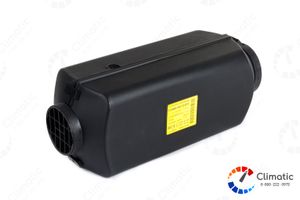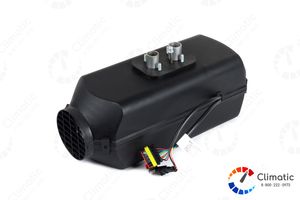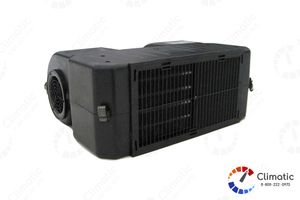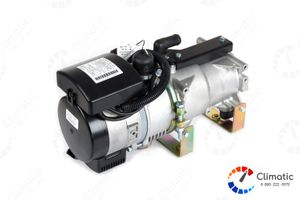Thermo E 200 and Thermo E 320. Webasto autonomy: buy and install at Klimatika Rus
Water heaters operate independently from the vehicle engine and are connected to the cooling system, fuel system and electrical equipment of the car. Water heaters together with conventional car heaters serve
-for heating the passenger compartment
-for thawing car windows
-for preheating of water-cooled automotive engines.
Heaters are installed only in horizontal position.
Thermo E 200 and Thermo E 320 heaters are installed without changing CO2 settings with unlimited use up to 1,500 m above sea level, up to 2,000 m above sea level for a short time (passing passes, stopping times).
For long-term operation at altitudes from 1500 to 2000 m, CO2 level adjustment is necessary, because due to low air pressure, a change in the exhaust gas composition is possible.
ATTENTION!
Heating of the passenger compartment or driver's cab is possible only in vehicles not specified in Directive 94/55 / EC (ADR, TRS).
Models
Thermo E 200 - 24V
Diesel fuel water heater, heating capacity 20 kW (17,200 kcal / h)
Thermo E 320 - 24V
Diesel-fired water heater with a heating capacity of 32 kW (27.500 kcal / h)
Upon request and depending on the configuration, it is possible to equip the heater with a nozzle heating system.
Installation Recommendations
-When installing, it is necessary to comply with the legal standards specified in the manufacturer's instructions.
-If it is planned to operate the water heater in a separately installed heating system, it is necessary to first submit to Spheros the installation plan for obtaining permission.
In the absence of permission, installation is not allowed and excludes the subsequent warranty and liability of the company. The water heater has been tested and approved for sale on buses.
- The temperature sensor cable must not be subjected to mechanical stress (for example, use to carry the heater).
- Heaters and circulation pumps must be installed in such a way as to avoid the influence of road pollution, splashes, exhaust gases and other harmful effects on them.
-Dismantling of individual components (motor heater, fuel pump, magnetic valve, control unit and temperature sensor) is unacceptable and serves as the basis for the termination of any warranty.
Installation location
The conditions for installation in each vehicle must be considered. The heater and the circulation pump are connected to the cooling system (or to a separate heating circuit). The place of installation of the heater should be as low as possible to ensure self-removal of air from the water circuit of the heater and the circulation pump. This is especially true for non-self-priming circulation pumps. If it is not possible to place the heater and the circulation pump in the engine compartment of the car, then their installation is allowed in a sealed enclosure. Outside, this enclosure should be sufficiently ventilated to avoid exceeding the maximum temperature of 85 ° C. With the expected long-term exposure to ambient temperature above 65 ° C, it is recommended to lay the pipeline in an area with a lower temperature. At installation it is necessary to consider the sizes of free space for maintenance (for example, dismantle of the combustion chamber).
Heater follows:
- Use with the fuel and rated voltage indicated on the nameplate. First of all, it is necessary to observe the temperature ranges of application of various grades of fuel;
- turn off when a large amount of smoke is released, unusual noise during combustion or the appearance of a smell of fuel by turning off and removing the fuse. Subsequent commissioning is allowed only after checking the heater by personnel trained in Spheros;
- turn off when a large amount of smoke is released, unusual noise during combustion or the appearance of a smell of fuel by turning off and removing the fuse. Subsequent commissioning is only permissible after the heater has been rechecked by personnel trained by Spheros.
-Turn on at least once a month with a cold engine for at least 10 minutes. No later than the start of the heating period as part of the annual maintenance, it is necessary to check the heater by qualified personnel.
Responsibility:
If the installation instructions and the instructions contained therein are not followed, Spheros’s liability is excluded. The same applies to unskilled repairs or repairs using non-original spare parts. This will invalidate the type approval, and thereby the General Permission for use or type approval. Liability claims are accepted only upon confirmation of compliance with the maintenance and safety instructions.
Forbidden:
-Exposure the heater to temperatures above 90 ° C (storage temperature). If this temperature is exceeded, irreparable n-defects may occur;
- operate the heater without a coolant recommended by the automaker (the proportion of antifreeze content (based on glycol) in the water of the heating circuit is at least 20%).
The liquid heater can be commissioned using a switch or a timer, depending on the configuration. Before turning on the heater, it is necessary to switch the standard interior heating to heating mode. Using the timer, you can set the heater's turn-on time up to 7 days. You can program 3 different options for the on-time, while only one of them can be activated. The timer has an alarm function. With the ignition on, the timer shows the current time and day of the week. During operation of the heater, the backlight of the display and keys is turned on. After connecting the power, all the symbols on the display will blink. You must set the time and day of the week.
During all activated operating modes of the heater, electrical components are monitored, supply voltages and failures are recorded during operation. If a malfunction occurs, the heater is blocked to prevent spontaneous re-activation of the combustion mode. At the same time, a flashing code is displayed in the operating mode display.
Emergency blocking occurs when:
-low voltage;
-no flame at startup;
- flame break;
- premature flame recognition;
Failure in the control unit or peripheral components.
Possible options for removing the emergency lock:
- turning the heater off and on again;
- resetting the heater to its initial state, for example, by disconnecting it from the power supply.
If the cause of the failure is a malfunction of the parts on which safety depends, in addition to emergency blocking, the heater is blocked.
The heater is blocked in the following cases: the overheating protection relay or its malfunction is activated liquid temperature sensor malfunction Solenoid valve malfunction Flame sensor malfunction (integrated in the control unit) repeated failures (eight consecutive emergency interlocks) repeated flame interruptions after switching off. If the heater is blocked, the appliance must be serviced by trained Spheros personnel and issued with a subsequent operating permit.
The type of malfunction is indicated by a flashing operation mode indicator. The indicator starts blinking at the appropriate frequency immediately after a malfunction is detected, and when the heater is turned on, it blinks before a reset is performed. The error code reproduced by blinking the indicator consists of a sequence of 5 short pulses as a pause and a certain number of long pulses corresponding to the error number that must be counted. Then a new sequence of 5 short pulses is issued. The value of the number of long pulses can be found in the table.
Table: Error Codes Reported by a Flashing LED
Number of long | Pulse fault description |
0 | Control unit malfunction |
1 | Lack of launch after 2 attempts |
2 | Flame break during operation, unsuccessful restart |
3 | Over / Under Voltage |
4 | Premature flame recognition |
5 | Flame sensor malfunction |
6 | Faulty temperature sensor or overheat protection relay |
7 | Solenoid valve malfunction |
8 | Malfunction of blower motor / nozzle holder heater |
9 | Circulation pump malfunction |
10 | Overheat protection relay tripped |
eleven | Malfunction of the ignition coil |
12 | Heater lockout (repeated failure or repeated flame failure) |






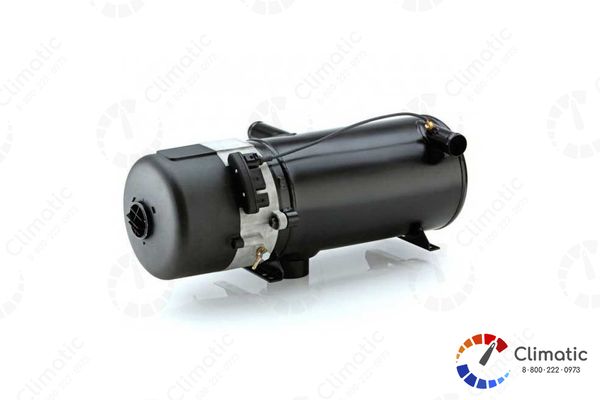
 Узнать у оператора
Узнать у оператора
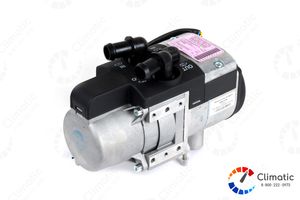
 В наличии
В наличии
